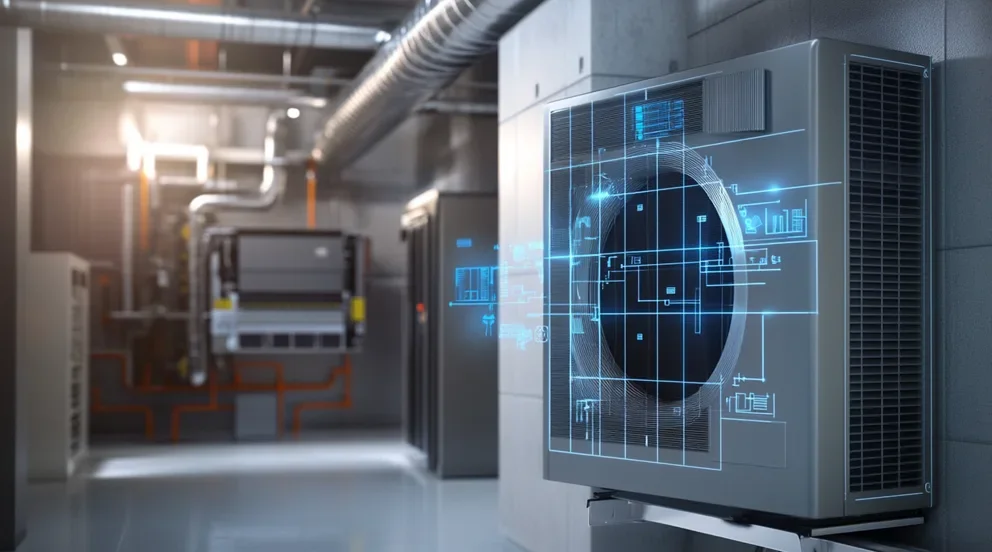HVAC drawing software is an essential tool for engineers and designers tasked with creating precise blueprints for heating, ventilation, and air conditioning systems in buildings. This specialized software empowers professionals to develop HVAC systems that are not only efficient and cost-effective but also compliant with industry standards. Its primary role is to optimize the design workflow, ensuring accuracy and generating reliable design outputs.
Key functionalities of HVAC drawing software include:
- Load Calculations:
- Computes heating and cooling load requirements based on factors like building dimensions, location, insulation, and occupancy.
- Crucial for determining the appropriate capacity and type of HVAC system for a given structure.
- Ductwork Design:
- Provides comprehensive tools for designing ductwork systems, including sizing, layout, and airflow calculations.
- Ensures meticulous system design, facilitating efficient distribution of conditioned air throughout the building.
- Energy Analysis:
- Includes utilities for scrutinizing the energy performance of HVAC systems.
- Offers recommendations for enhancements aimed at boosting energy efficiency and reducing costs.
- Compliance with Codes and Standards:
- Ensures adherence to industry stipulations, such as those outlined by ASHRAE guidelines.
- Guarantees compliance with safety and efficiency requisites.
- 3D Visualization:
- Many HVAC design software suites offer advanced 3D modeling capabilities.
- Enables users to construct intricate representations of designs, aiding visualization and issue identification before construction begins.
In essence, HVAC drawing software plays a pivotal role in crafting HVAC systems characterized by efficiency and effectiveness. It expedites the design process, ensures alignment with industry benchmarks, and contributes to heightened energy efficiency. As technology advances and the demand for sustainable structures grows, HVAC design software remains at the forefront of innovation in the industry.
In the following sections, we will delve into the attributes and merits of HVAC design software, highlighting its paramount importance in the ever-evolving realm of sustainable building practices. Whether one is a seasoned practitioner or a newcomer to the field, a comprehensive grasp of HVAC design software proves imperative for delivering superlative designs within the context of contemporary building methodologies. Let’s embark on an exploration to unravel the facets that render HVAC design software an indispensable tool for professionals in the HVAC industry.
Eco-Friendly Building Methods: The Basis for Green Building Technologies
The increasing apprehension regarding climate change and the depletion of resources has elevated the significance of sustainable construction practices. These practices, encompassing eco-friendly techniques and technologies throughout the life cycle of a building, are pivotal in mitigating environmental impact and enhancing the well-being of occupants. Within the realm of green building technologies, HVAC design software stands out as a key player in advancing the cause of sustainable construction.
In the realm of sustainable construction practices, HVAC drawing software assumes a critical role by fostering the creation of energy-efficient buildings. Through its features like load calculation and energy analysis, this specialized tool empowers engineers and designers to formulate HVAC systems that adhere to established sustainability standards. Precise assessments of heating and cooling loads, coupled with analyses of energy performance, equip professionals to make well-informed decisions regarding system design. This, in turn, leads to diminished energy consumption and a reduced environmental footprint.
The intricate capabilities of HVAC design software, such as detailed ductwork design and 3D visualization, ensure not only efficient system design but also effective installation. This facilitates the proper distribution of conditioned air throughout the building, enhancing occupant comfort and significantly contributing to overall energy efficiency and sustainability.
As the construction industry increasingly prioritizes sustainability, the role of HVAC design software becomes even more crucial. This tool becomes instrumental in achieving the collective objectives of constructing environmentally-friendly buildings that benefit both individuals and the planet. The trajectory toward a more environmentally-conscious future in construction is propelled by foundational green building technologies, with HVAC design software taking a leading role in this transformative journey.
HVAC Design Software Types: Selecting the Appropriate Tool for the Job
Certainly, the HVAC design software landscape presents a diverse array of options, each offering specialized tools tailored to distinct needs. Let’s explore some prevalent types of HVAC design software to gain a deeper understanding of their features and applications:
- Integrated Design Suites:
- Features: A comprehensive package encompassing load calculations, ductwork design, energy analysis, and 3D visualization.
- Ideal for: Larger projects demanding a holistic approach to HVAC system design.
- Load Calculation Software:
- Features: Focuses specifically on precise load calculations.
- Ideal for: Smaller projects where a complete design suite might be overly comprehensive.
- Ductwork Design Software:
- Features: Specialized in generating detailed designs for duct systems, potentially including airflow analysis and equipment selection.
- Ideal for: Projects with a primary emphasis on ductwork design.
- Energy Analysis Software:
- Features: Emphasizes energy efficiency, enabling users to analyze system performance and provide recommendations for enhancements.
- Ideal for: Projects giving priority to energy-conscious designs.
- CAD Software:
- Features: Offers 2D and 3D design capabilities, not exclusive to HVAC but adaptable.
- Ideal for: Larger projects with intricate system requirements, demanding a higher level of expertise.
Selecting the appropriate HVAC design software hinges on factors such as project scope, budget constraints, and specific requirements. A meticulous evaluation of these considerations is imperative to ensure optimal outcomes. As technology continues to progress, we can anticipate the emergence of even more specialized and advanced forms of HVAC design software, further amplifying the capabilities available to industry professionals. The key lies in aligning the software’s features with the project’s needs, thereby facilitating the delivery of efficient, compliant, and well-designed HVAC systems.
HVAC Design Collaborative Environments: Boosting Team Cohesion
Absolutely, efficient communication is fundamental in any project, and HVAC design, with its complexity and interdisciplinary nature, is no different. Collaborative environments designed for HVAC facilitate teamwork and communication among project stakeholders. These software programs enable real-time collaboration and communication, regardless of the geographical locations of team members. Such platforms simplify the exchange of ideas, feedback, and decision-making, thereby elevating the overall efficiency of the design process.
Key advantages associated with collaborative environments in HVAC design include:
- Improved Communication:
- Utilizing a shared platform minimizes miscommunications and delays in the exchange of information, leading to a more efficient and streamlined design process.
- Features such as real-time chat, video conferencing, and file sharing enrich communication and collaboration among team members.
- Centralized Location for Project Documents:
- These environments establish a centralized repository for all project documents and data, eradicating the need for multiple versions of designs and averting confusion among team members.
- Easy access to project information ensures that team members remain abreast of progress and changes.
- Teamwork and Unity:
- Collaborative environments cultivate a sense of teamwork and unity among project members.
- Working together on a shared platform enables team members to witness each other’s contributions, fostering improved decision-making, problem-solving, and ultimately, a higher quality design.
Indeed, collaborative environments in HVAC design play a vital role in enhancing communication, streamlining the design process, and fostering a cohesive team dynamic. These platforms empower HVAC design teams to work efficiently, make informed decisions, and deliver high-quality designs.
Conclusion:
In conclusion, HVAC design software is crucial in the HVAC industry, offering efficient solutions for crafting HVAC systems. With ongoing technological advancements and a focus on building sustainability, its pivotal role is set to grow.
Remaining attuned to the latest developments in this dynamic field is imperative. This commitment ensures the ongoing production of top-tier designs, facilitated by the continued integration of HVAC design software.



